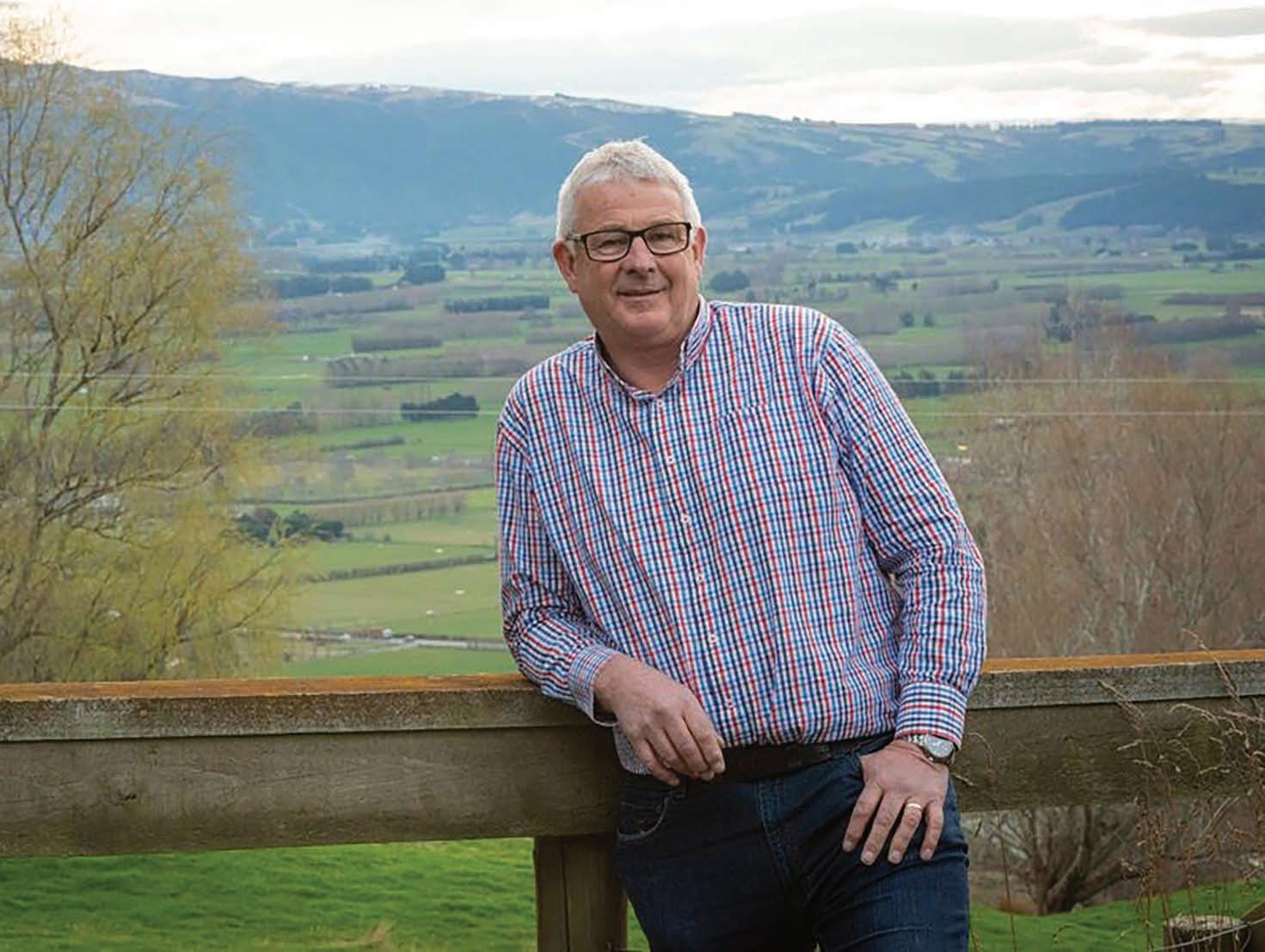
24 minute read
Community crucial for catchment groups
Community crucial for catchment improvement
Colin Williscroft colin.williscroft@globalhq.co.nz
FARMERS need to drive catchment groups from the bottom up but it’s those groups’ relationships with their wider communities that will ensure partnerships are intergenerational in improving water quality, while at the same time maintain vibrant rural communities.
That was one of the messages from Beef + Lamb New Zealand’s recent final catchment group e-forum, which featured catchment leaders Emma Crutchley, Lloyd McCall and Roger Dalrymple.
Dalrymple, who chairs the Rangitīkei Rivers Catchment Collective (RRCC), says for catchment groups to be successful they need to be led by farmers who understand why such groups are necessary.
But he says what’s also needed is a vision for the whole community, with those people closely involved helping to share stories about work being done.
Being farmer-led means change will come from the bottom up, which will help educate farmers on what can be done rather than force things on them, the latter more likely to chase them away, while enabling the wider community to tell others of ongoing work will help regain public confidence in what farmers and landowners are doing.
Crutchley, who is on the governance committee for the Tiaki Maniototo, Upper Taieri Wai Catchment Restoration Project in Central Otago, agrees.
“For us, it’s all about community,” she says, with her group’s stakeholders not only farmers or others involved in the primary sector.
“They might be cribbies (batch owners), or they might be visitors to the area. It’s about allowing space for everyone to take a bit of ownership and for everyone to feel included in working on something collaboratively.”
She says for that to work, groups need to welcome a range of ideas from those who want to take part.
“If someone has got a cool idea, just get behind them.
“When you’ve got that positive vibe you’re building an environment where other people want to be part of that and when you bring people together collectively, they are really effective at solving some of these challenges.”
McCall, a founding member of the Pomahaka Water Care Group in south-west Otago, says a range of ideas is important because one size doesn’t fit all when it comes to catchment groups.
“If you have plenty of people involved it makes it harder to lose momentum because there’s always someone with the next idea.
“You’ll never lose momentum because there is always somebody who has got the next idea if you have plenty of people involved.”
The presenters were united in saying that for catchment groups to be successful and involve the whole community, they need to extend beyond their core focus, although that cannot be forgotten.
Dalrymple says RRCC members look at other issues, including organising farm planning and greenhouse gas workshops, weed control, while one sub catchment group is looking at the need for a cell phone tower.
“We’re (also) getting a preliminary assessment done on what we can grow and do in our area by planting food.” Crutchley agrees.
“One of the things that’s been (talked about) around here is a recycling station, how do we solve on-farm waste collectively?
“Those are types of things that bring people together.”
Dalrymple and McCall say there is also a need to focus on the social achievements that catchments can make.
The RRCC includes a barbecue and drink catch-up part of all events it organises, while the Pomahaka group has a similar approach.
“You’ve got to be prepared to do stuff over a cup of tea. If you’re trying to do hard core planting project-based stuff all the time people get sick of that,” McCall says.
All three presenters agreed that although government funding is important to catchment groups, the current funding model needs to change.
“We have to learn to survive without the support of the government,” Dalrymple says.
“This is a learning curve for government as well, for MPI and MfE.
“I don’t think we’ve got it 100% right the way we’re doing it but some financial support is definitely appreciated, it’s just how it’s being provided at the moment.
“We don’t want it to go away tomorrow but if we end up depending on it solely we’re in trouble.”
Crutchley, speaking from a perspective of a catchment group that went from having nothing to being a $6m project, says dealing with that funding creates its own issues.
“Be careful what you bite off to chew because it’s a hell of a beast in terms of reporting and that is money that actually takes away from outcomes.
“That’s a hard pill to swallow.”
McCall says sometimes external funding is very helpful but there is a need for a new funding model.
“If all the funding was pulled tomorrow we’d all be pretty flat for quite a while.
“(But) we need to work out ways to get consistency of funding, rather than just going on a three-year lolly scramble.”
NUMBERS: Founding member of the Pomahaka Water Care Group Lloyd McCall says catchment groups need to have plenty of people involved as it makes it harder to lose momentum because there’s always someone with the next idea.

Calciprill ®


leaves all other limes for dust!
Application rate guide (kg/ha)*
Soil type Topdressed 0.5 pH increase
Direct drilled or air seeded
Sand/loamy sand 300 75 Sandy/silt loam 500 125 Clay/loamy clay 625 150 10-15% organic matter 750 175 +25% organic matter 1000 200 *Omya recommends you soil test recularly and seek advice from independent agricultural professionals A 2-6mm lime granule made in Waikato from fi nely ground high purity limestone. • Cost effective • Low in dust, easy to spread • Breaks down rapidly in moisture • Can be applied using your own equipment • 95% < 75 microns


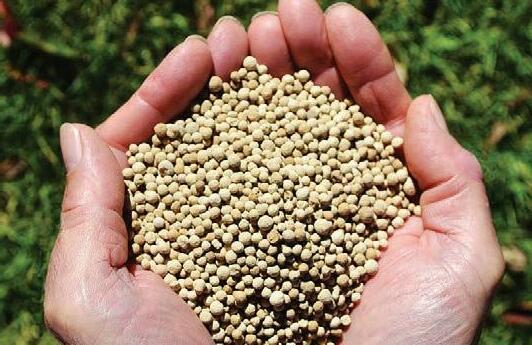
Wool-based floors grow in popularity
Annette Scott annette.scott@globalhq.co.nz
SOARING consumer demand has more Kiwi homes being floored in wool as consumers increasingly ask specifically for wool carpet.
As a result, Wools of New Zealand (WNZ) is reporting a 50% rise in wool sales through its retailers.
WNZ chief executive John McWhirter said wool carpets now account for a growing proportion of WNZ partners’ retail sales.
“The rising demand means wool’s share of the carpet market has grown by more than 350,000 kilograms of wool,” McWhirter said.
“It’s a clear indication that more New Zealanders are considering sustainable floor options for their homes.”
WNZ last year partnered with Flooring Xtra and other independent retailers to launch wool carpets to the market.
“Wool-based flooring now accounts for a significant part of our sales revenue and we couldn’t be happier,” he said.
“In the last six months we have seen consumers consistently walking into our stores asking specifically for carpets made from wool,” Flooring Xtra chief executive Tony TeAu said.
Next month WNZ will be welcoming on board additional independent and retail chains to market wool carpets.
Wool’s lower carbon footprint is increasingly in step with consumer expectations.
“The feedback we are getting from retailers is that consumers are seeking sustainable, renewable and biodegradable carpet made from wool grown right here in NZ,” McWhirter said.
One of the key barriers to increasing sales of wool carpets in the past has been affordability.
“WNZ carpet is priced competitively compared with synthetic carpets, meaning New Zealanders have a genuine choice between a synthetic product or a natural product direct from WNZ’s farmer-growers.
“We firmly believe carpets don’t have to cost the earth.
“Our goal is to grow the consumption of strong wool in the market by making wool carpet affordable to the majority of Kiwis.
“We can achieve this by utilising modern high volume manufacturing operations, without impacting on quality, and taking costs out of the supply chain.
“Carpet moves significant volumes of wool and for our growers this captures greater returns and increases the demand for wool.”
In line with the increase in wool carpet sales, the price of wool has started creeping up, he said.

GROWTH: Wools of New Zealand chief executive John McWhirter says wool carpets now account for a growing proportion of WNZ partners’ retail sales.
Bring out her best

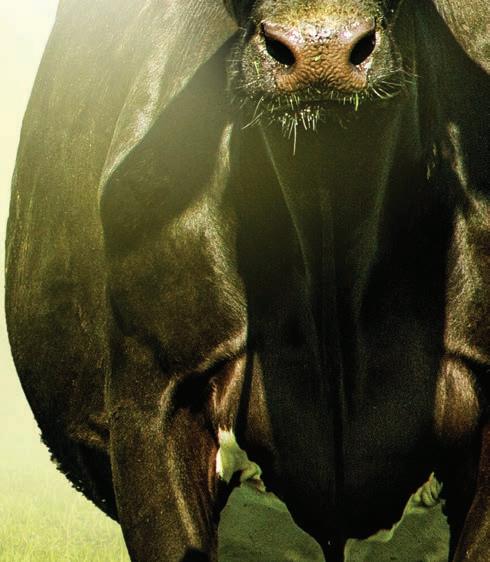
IMPROVE BODY CONDITION
INCREASE PRODUCTION & PROFIT
PROTECT FOR LONGER USE ANY TIME. NIL WHPs







A happy, healthy cow is a better performing cow. So bring out their very best this Autumn with CYDECTIN®. Autumn sees the highest parasite challenge for your stock. But CYDECTIN makes short work of them, which means energy can go into improving body condition and milk production. The nil milk and meat WHPs also give you flexibility to treat when you need. CYDECTIN is long lasting, with 35 days protection against Ostertagia ostertagi. It kills biting and sucking lice too. It kills biting and sucking lice too. So keep your profits up and parasites down. Invest in CYDECTIN – New Zealand made for healthy Kiwi cows.
Lime the flavour of the month
Annette Scott annette.scott@globalhq.co.nz
LIME is poised to benefit from rising fertiliser prices as farmers reassess their input costs.
With farmers facing huge increases in the price of fertilisers the country’s lime industry is pointing to the benefits of their locally-extracted product.
New Zealand Limestone Producers Association (NZLPA) chair Shaun Cleverley says farmers are having to reassess what they do with fertiliser costs only one of several factors stretching farm budgets.
“To be fair, farmers are always doing that (reassessing) to some degree but do it more so when financial constraints impact.
“Every time financial constraints put pressure on the back pocket farmers, like everyone, look at where they can get the best bang for buck.
“We are seeing farmers across the country picking up the (lime) option.”
Cleverley manages two Canterbury lime quarries and says while lime has risen in price it has not seen the hike like the doubling of the cost of urea and the 50% lift in fertilisers like magnesium, sulphur and potash.
“With all agricultural lime produced locally there is not the freight and transporting costs as with fertilisers.
“Across the industry lime has gone up, but the biggest rise would be only 10% with the average more like 3-5% in the past 12 months.
“While we are not breaking any records in Canterbury there has certainly been an increase in famers coming for more lime and in Southland and Hawke’s Bay, where it is dry, they are starting to break records.
“It is a good time now to get pH to optimal levels for nutrient availability,” Cleverley said.
Southland’s AB Lime general manager Steve Smith says with fertiliser prices very high some farmers are looking to concentrate on fixing their soil pH.
“Soil acidity has an effect on the availability to plants of nutrients like phosphorous, nitrogen and potassium and lime helps address that,” he said.
But Smith says with today’s focus on the environmental impact of agriculture, including fertiliser use, farmers need to choose their fertiliser programme wisely, making sure it works with their farm and farm system goals.
“Lime is an important component in the mix and it’s a particularly good option at the moment while fertiliser prices are so high, but it doesn’t replace fertiliser long-term.”
The general manager of Avoca Lime in Whangarei, Keith Squires, says lime is an important way to “sweeten the soil” by boosting pH levels.
“It provides great bang for your buck by fostering optimum availability of all other nutrients, so now is an especially good time to use lime,” Squires said.

GEARING UP: Limestone quarries such as this at Victory Lime in Canterbury are getting busier with farmers increasingly turning to lime as they reassess soaring fertiliser budgets.







STYLE OR SUBSTANCE?
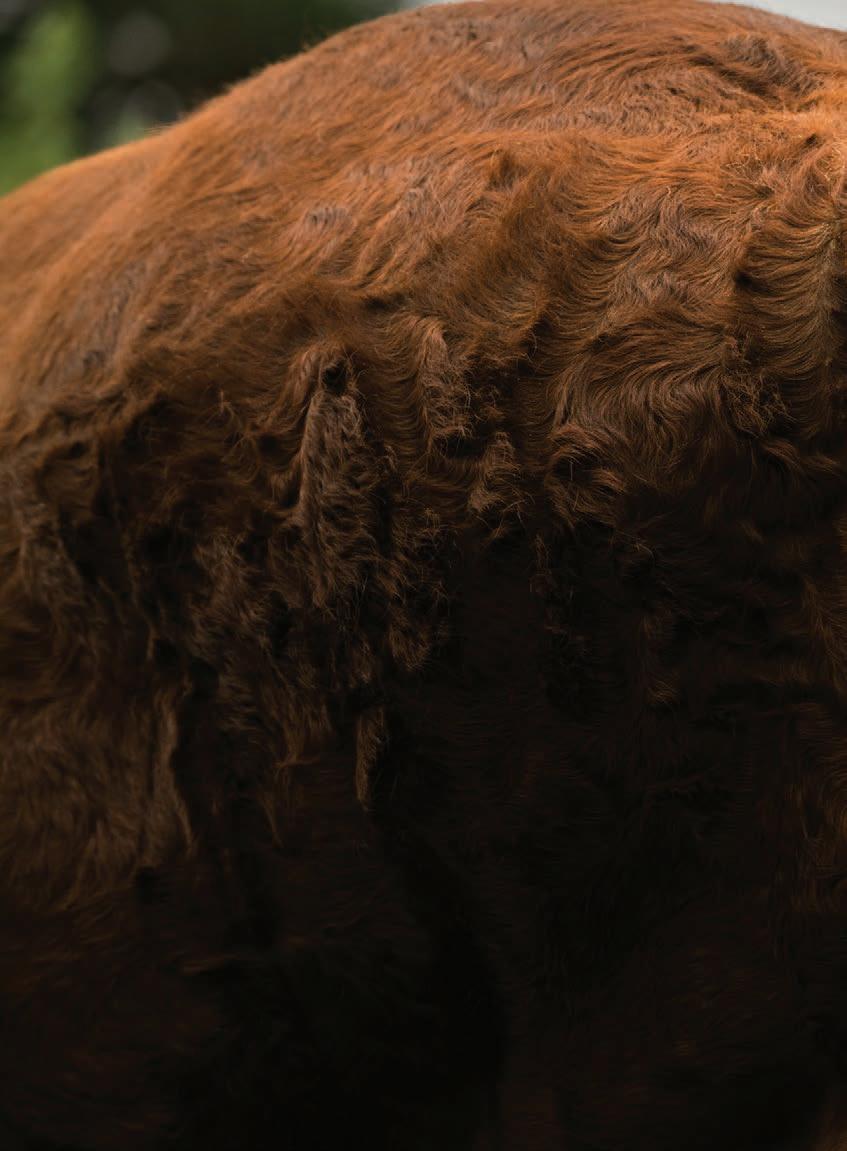
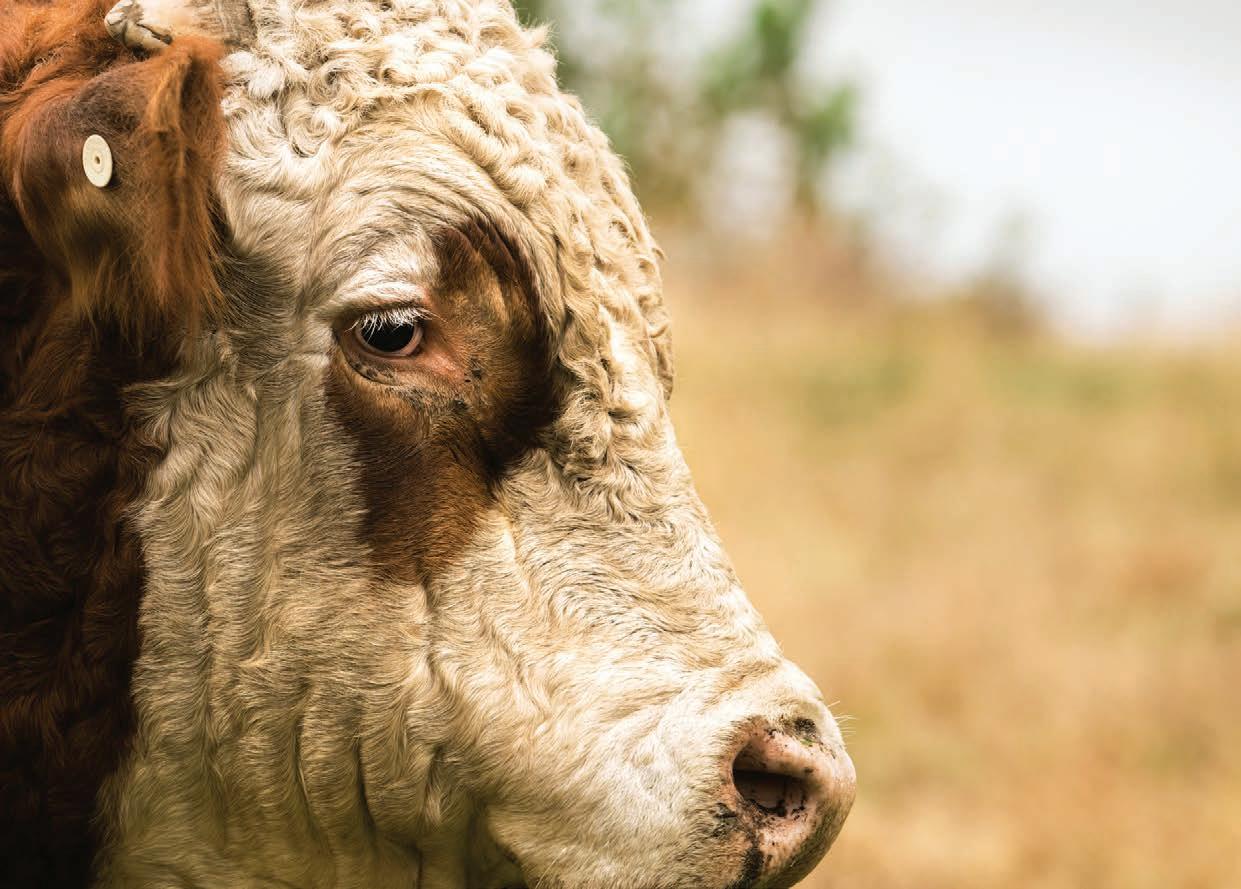


With four of the top ten slots taken by Simmental for weaning weights in the latest Beef+Lamb Progeny test results* you and your bank balance will be better off selecting a Simmental this bull sales season. That way you can stay in the black by going for gold. Learn more at simmental.co.nz
Milestone sale for genetics programme
Neal Wallace neal.wallace@globalhq.co.nz

THERE was special interest in the 240 calves weaned last week at Landcorp’s Kepler Farm in Southland.
These were the first calves bred for the Beef + Lamb NZ Genetics Informing NZ Beef (INZB) project, a seven-year programme supported by the Ministry for Primary Industries’ Sustainable Food & Fibre Futures fund to improve beef genetics and their use by the beef industry.
This year was the first weaning of progeny tested calves, but numbers are expected to double next year to include another crop of first calvers.
BLNZ beef genetics’ specialist Anna Boyd says the aim is to boost profits within the sector by $460m over the next 25 years.
It will include the development of a genetic evaluation system using traits relevant to and determined by NZ beef farmers.
It will also create tools so farmers can efficiently collect those traits, manage and analyse the resulting data all underpinned by a new approach to information extension to beef farmers.
The 1500ha Kepler Farm near Manapouri in northern Southland is a specialist genetics unit for Landcorp,and farm manager Travis Leslie says staff have the skills and understanding to monitor and record animal traits and data, along with appropriate stock handling facilities.
Landcorp ran Angus cows on the property but bought Herefords when it committed to the trial.
Kepler operates an all grass system with the addition of baleage over winter.
Boyd says the purpose of the progeny test is to gather information to rank bulls across breeds and to compare performance under the same management and conditions.
“This helps us to make comparisons across breeds, and also to estimate the impact of hybrid vigour in the crossbreds and the impact of breed on maternal performance.
“This is important if we are to create an evaluation which is across breeds,” she says.
Input from farmers will help decide what traits are recorded and could include docility, hip height, muscle scanning and cow condition score.
Prime steers and heifers weaned this week will be killed in a year’s time and their carcases analysed with that data added into the programme.
About half the first calvers were artificially inseminated to Angus and Hereford bulls in 2020 using semen from bulls that had been previously used in progeny tests, with the other half naturally mated by follow up bulls.
Boyd says in the coming year stud breeders will be invited to nominate sires which will have to meet minimum estimated breeding values and adhere to Kepler Farm’s breeding objectives.
“Ultimately, the INZB programme will put tools in the hands of farmers that will increase the rate of genetic gain across New Zealand’s beef industry.”

WEANING TIME: BLNZ beef genetics’ specialist Anna Boyd and Landcorp Kepler Farm manager Travis Leslie, weaning calves last week, part of beef genetics improvement programme.

Anna Boyd Beef + Lamb New Zealand
Colin Williscroft colin.williscroft@globalhq.co.nz
FINANCIAL skills workshops being run around the country by Rabobank aim to provide farmers with practical knowledge to help them better understand financial statements and banking requirements.
The workshops have been organised by Rabobank’s client council network.
Woodville farmer Hazel Bourke attended the day-long workshop held in Feilding recently, which was run by Masterton-based specialist farm accountant Lawrence Field.
Field took farmers through topics such as what success looks like, what can be done with more profit or equity and why, what and how farmers can improve their financial skills.
They also looked at financial statements, profit and loss, and balance sheets, before going through key ratios and calculations such as cash, profit and equity.
During the final part of the day Field explained what lenders look for and how borrowers are graded on personal capability, viability and security scales, while also sharing tips on how farmers can make their relationship with their bankers as beneficial as possible.
Bourke says she found the day extremely worthwhile and would recommend it to others.
She says the information provided was easily accessible and there were plenty of opportunities throughout the day to ask questions.
“There were some really good reminders and I learnt quite a bit about stock reconciliation, which was really useful.
“It was good to meet people who were in the same position as me, like-minded people who want to understand their financial background and want to grow their business.”
Lower North Island client council chair and Taihape farmer Mark Chrystall also took part in the Feilding workshop.
He says the purpose of the workshops is to lift financial literacy on-farm and farmers do not have to be a Rabobank client to take part.
“There’s a real need to get into the office and understand what the accounts look like, understand a balance sheet and a profit and loss statement.”
He says improved financial literacy among farmers will not only help strengthen individual business but also the industry overall.
ENSURE THEY REACH THEIR PEAK POTENTIAL
The essential building blocks for optimal health including vitamin B12 in one convenient injection.



Ensure young stock become future high producers through improved health, growth and energy at: futureproducers.co.nz

14 FARMERS WEEKLY – farmersweekly.co.nz – April 25, 2022
News Focus on impact of cell tower sales
Richard Rennie richard.rennie@globalhq.co.nz
THE impact on rural connectivity of Vodafone and Spark’s planned cell tower sales will depend heavily upon the long and shortterm goals of the investment companies that purchase them, and the depth of commitment to the sector.
Telecommunications Users Association of NZ (TUANZ) chief executive Craig Young says New Zealand has been the global exception in having its cell phone towers owned by the telcos that operate them.
“In Australia Telstra have just sold 49% of their tower company,” he says. “This will free up quite a lot of capital for both Vodafone and Spark, but how it plays out will depend upon who buys the towers.
“If it’s short term, they will just be wanting to get dollars out of it. It will also depend upon whether the towers get sold to two competing companies or just to one investment company, but the regulator may have something to say on that.”
He said the cell tower network being set up under the Rural Connectivity Group (RCG) agreement would not come into the deal.
These towers were initiated under a 2017 agreement between government and the three telcos where towers would share equipment owned by all companies to provide 4G broadband connectivity.
“It is possible that the RCG group may even buy some of the towers in some regions to expand further.”
The figures being bandied about for the cell tower sales are about $1 billion for Vodafone’s and slightly less for Spark’s.
The RCG programme has the goal of erecting 500 towers across NZ by 2023 to expand 4G cellular coverage from 49% to 62% in a globally unique multi-ownership model.
By the start of this year just over 300 live sites had been rolled out after what Young described as a slow start.
“The downside to this service is that the more people you get on these sites, the lower the speed, but the theory with RCG sites is they are in sparse, low population areas and will not hit capacity issues.”
Further rural rollout has been aided by the $47 million injection to the Crown infrastructure projects fund through the covid response recovery fund.
Young said it was encouraging to see smaller localised wireless service providers had been given a seat around the table for that funding, and they too were now capable of rolling fibre into localised areas.
He saw this as a key means of dealing to the “stale donut” where the fringes of internet coverage in rural areas initially served under the RBI 1 initiative struggled to keep up with demand over lockdown. In total 11 organisations received funds through the response initiative.
Satellite links are likely to play a key part in hooking up the “last 3%” of rural users unable to access any other connections. NZ is served by low orbit satellites flying south to north, and there was likely to be more launched in coming months.
For remote rural users, Young said their main concern was that copper would be withdrawn, given 60% still have a landline.
“But under a Chorus deed with government, copper cannot be withdrawn if an equivalent service cannot be provided instead. Anyone who had copper in 2001 cannot have it withdrawn.”
This fear had been fuelled by misleading pitches made by some telcos to rural users, telling them their copper line was due to be removed.
If a copper line was removed and a rural customer was moved to voice over internet, the power supply required for that means Spark has committed to providing an uninterruptible power supply unit to provide eight hours of power.
Craig Young TUANZ
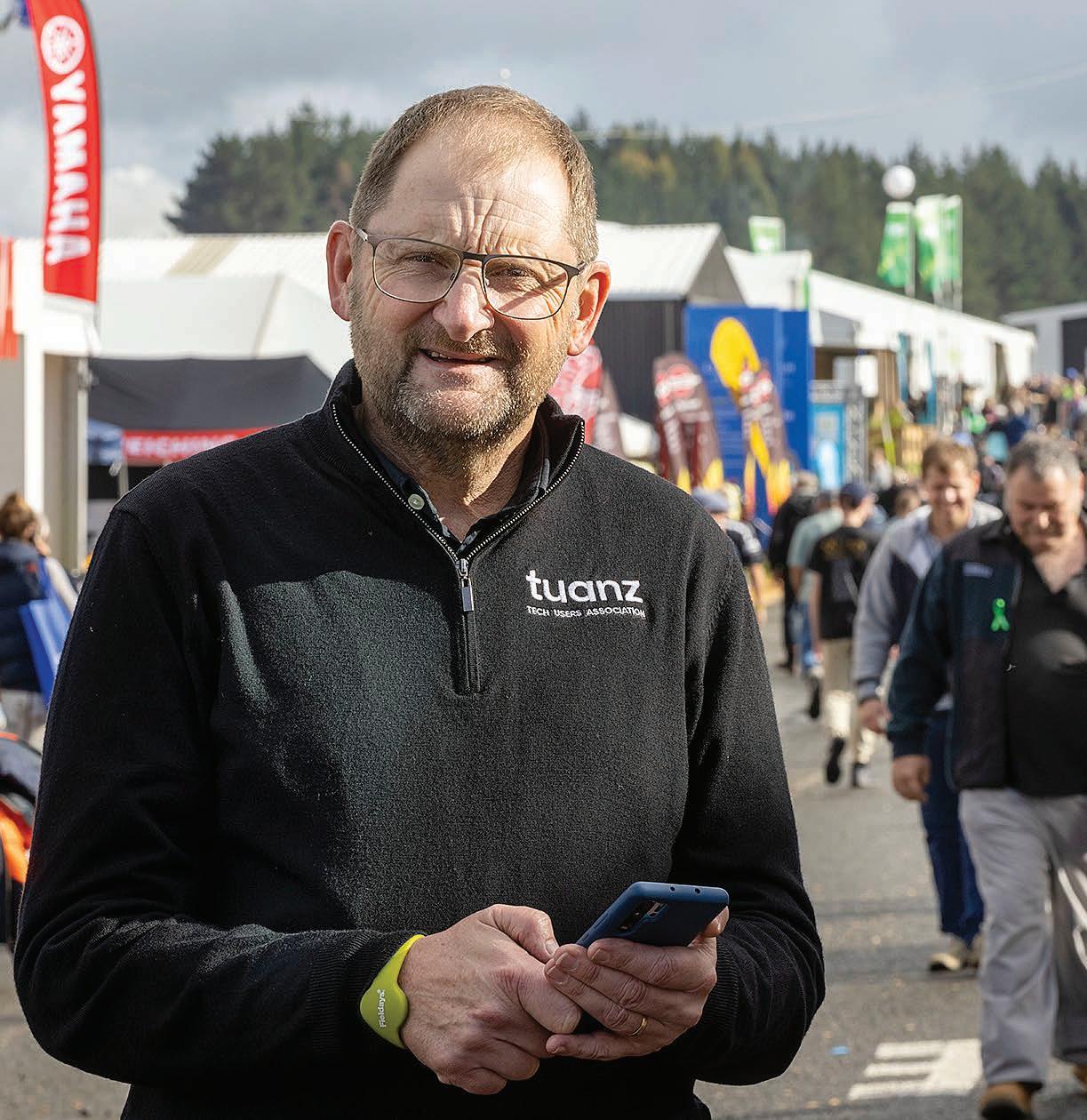
CONNECTED: TUANZ chief executive Craig Young says the planned sale of Spark and Vodafone cell towers could hold some upside for rural users, depending who buys them.

High-tech fish screen first of its kind in NZ
Annette Scott annette.scott@globalhq.co.nz

A KEY piece of water infrastructure for the Ashburton District could lead to a flow of similar designs across NZ that will keep fish in the waterways where they belong.
The $18 million high-tech screen installed on the side of the Rangitata River just below the Rangitata Diversion Race (RDR) irrigation intake is specifically designed to keep young salmon, trout and native fish from being trapped in the main irrigation diversion race.
Young fish that are swept into the intake will be diverted by the fish screen back into the river where they can continue their life journey.
The first of its kind in NZ, RDR Management Ltd (RDRML) believe it has the potential to lead the way for fish screens on irrigation schemes around the country.
Set for launch in mid-May, the fish screen and its associated supporting concrete infrastructure and canal construction recently opened for a public viewing before it all goes under water.
RDRML chief executive Tony McCormick says interest exceeded expectation, with close to 1000 visitors turning out to see how it will work.
McCormick says while it was made in Australia, with the main onsite assembly and construction undertaken by Ashburton company Grant Hood Contracting, the overall project has resulted from the successful collaboration of local, national and international companies and individuals.
Engineering specialists were engaged in the design process to ensure the fish screen performs as required by the consent conditions and returns fish safely to the river.
“The RDR diverts a significant amount of water from the Rangitata River, so it is important that all reasonable efforts are made to ensure this does not impact the fish species that reside in the water.
“Very complex computer modelling was undertaken to ensure the water velocities were low through the screens but high enough along the channel to direct fish back to the river,” McCormick said.
The total project cost is about $18m, breaking down to $5.5m for the fish screen, $9.5m for construction and $3m for engineering design and management costs.
The main fish screen structure, at 105 metres long and five metres high, looks a bit like a bullet train.
It is designed to pass up to 33.5 cumecs of water, with the fish bypass operating within a flow range of three to five cumecs to enable fish to return safely back to the river.
The actual screen covers 370 square metres, enough to wrap a one-metre-high barrier around a rugby field.
Once the water has entered the canal it passes through the fish screen, which consists of seven fine mesh covered cylindrical T-screens that rotate to divert young fish away from the irrigation diversion race and channel then back into the river.
Downstream of the T-screens are a series of flat panel screens made of the same 2mm spaced wedge wire, with all screens having control baffles to regulate the flows through the screens and ensure an even flow across the screen area.
“The screens are designed such that the flow velocity through is low to ensure small fish do not get sucked onto the screens, while the sweep velocity downstream remains high to enable fish to continue to swim downstream and back to the river via the fish bypass channel.”
The screen is also an essential part of the consent to take water, which is vital for the region’s economy as well as the ecosystem of the river.
The consent specified key design aspects of the facility, including having it located as close as practical to the Rangitata River.
The fish screen has been built in a new section of race excavated in an area of scrubland about 1600m downstream of the main RDR intake.
The RDR, referred to as the lifeblood of Mid Canterbury, is a 67-kilometre-long canal scheme that has been in operation since 1945, diverting water from the Rangitata River for multiple uses.
It delivers water to three community irrigation schemes covering 100,000 hectares of highly productive farmland, two hydroelectric power stations and supplies stock water races.
Over time technologies have continuously been improved and environmental aspects investigated with the fish screen, while no easy feat, one of the biggest projects set to meet environmental regulations well into the future.
VITAL: RDRML chief executive Tony McCormick says it is important to ensure there is no impact on the fish species that reside in the river.
BULLET TRAIN: The main fish screen structure at 105 metres long and five metres high looks a bit like a bullet train.

Tony McCormick RDRML
Ideas that grow



